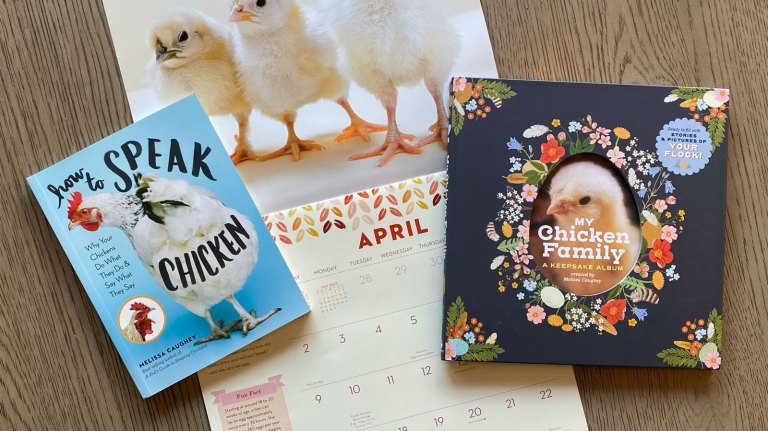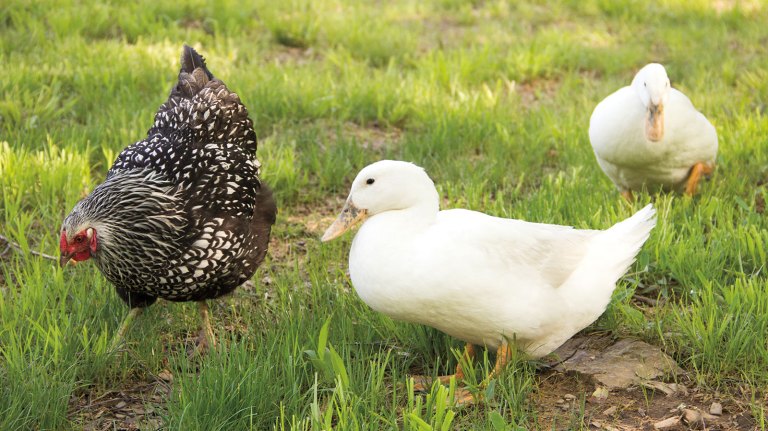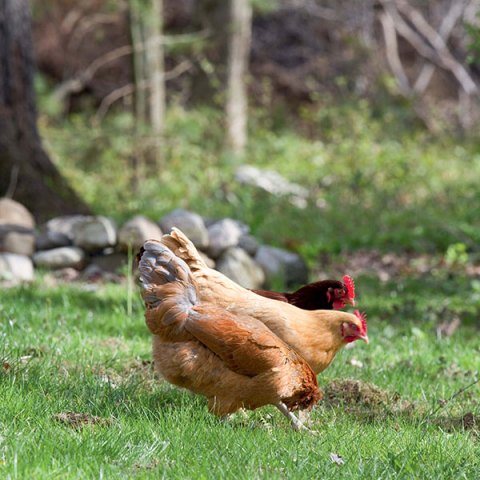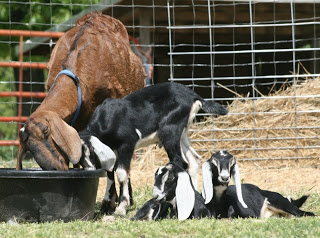Deb Burns: Animal Minds

My family had a lot of animals when I was growing up, primarily cats (and kittens), dogs (and puppies), and rabbits. Transients ranged from tropical fish and a myriad of white mice to a series of parakeets and a pony named Tony. Now, although I love animals, I have only a cat, a beautiful tortoiseshell named Camelot (stretched out next to me as I type this).
Fortunately, I am Honorary Aunt to the many critters that share the lives of Storey’s equestrian and farming authors. And this is my favorite time of year, when authors send me their baby pictures of new foals, calves, and kids. The two brand-new kids below belong to Sue Weaver, author of The Donkey Companion and the upcoming Storey’s Guide to Miniature Livestock.


Where livestock is concerned, chickens are clearly the gateway drug. Once you’ve accepted the daily regimen of feeding and care for one species, it’s easy to move on to more. A number of our authors keep multiple species: horses, donkeys, goats, dairy or beef cattle, pigs, chickens, waterfowl, cats, and dogs. I love to imagine the warm sense of well-being on a farm like that, the wholeness that comes from diversity. Different temperaments, shapes and sizes, food preferences, and evolutionary backgrounds all coexist.
Horses and cats go particularly well together, despite their prey/predator backgrounds. For proof you can consult one of my favorite Storey books, a kids’ poster book called Horses & Friends, which depicts the remarkable (to us) bond that horses can forge with other species without our being involved at all.

The theory is that horses’ evolution as prey animals gave them high sensitivity to the herd and an instinct to bond with other beings. But it must be only since domestication that they’ve learned how to cuddle with cats, dance with dogs, and shoot the breeze with nocturnal visitors such as deer and raccoons. The photos in this book show all of these and more — moments of intimacy, exploration, and play between very different creatures. It gives you hope!
Two of our authors, Cherry Hill (How to Think Like a Horse and other books) and Dr. Temple Grandin (Humane Livestock Handling), have devoted their lives to exploring and improving the relationship between humans and animals. Both women, who live not far from each other in Colorado, are students of the animal mind, observing closely, developing insight and understanding, and testifying as to how other species might perceive the world and how we must behave toward them. To me that seems like time well spent.
Another who ponders animal consciousness is Verlyn Klinkenborg, the New York Times columnist, who spoke in our town recently. He admires animals’ astonishing senses: the dog’s extraordinary nose, the visual acuity of barnyard birds, the horse’s memory for landscape and geography. (I can’t wait to explore this in a future posting.)
He wonders in particular how the animals on his New York farm (including horses, pigs, and chickens) perceive him in their different fashions. Does he simply equal food, or is he more to them than that? The answer is still out there.
I asked how the different species on his farm seem to perceive and relate to one another. In response he recounted a midnight drama — the pig had somehow gotten into the horse paddock and was intent on mating with a pony (they were about the same height). Paralyzed, Klinkenborg had no idea how to persuade a 400-pound porker to run along home.
While he was deliberating, however, his old Quarter Horse must have been visualizing the grain bin in the pig’s enclosure, to which the gate was obviously standing open. She left the paddock and proceeded to the bin, followed by the other horses, the pony, and finally the lovesick pig. The mare saved the day, all ended up safe in their proper beds, and if Klinkenborg hadn’t been watching in the middle of the night, he might never have known.
Klinkenborg holds a Ph.D in English literature, and he looks at nature the same way you might look at a poem — turning it around or inside out, gazing at it from surprising angles, picking up threads and themes. He might not appreciate that academic comparison, but he did like something another questioner said. This man, dapperly suited amid an otherwise denim-clad audience, said, “If I were a chicken, or a pig, or a turkey (and some people may think I am), I would want you to be my farmer.” Replied Klinkenborg: “That’s the best compliment I’ve ever received.”
A big part of humans’ task while we’re here seems to be to observe and learn from the creatures (small and big) who share our habitat (the entire earth). To understand them even a little bit brings us humility and a better knowledge of ourselves.





